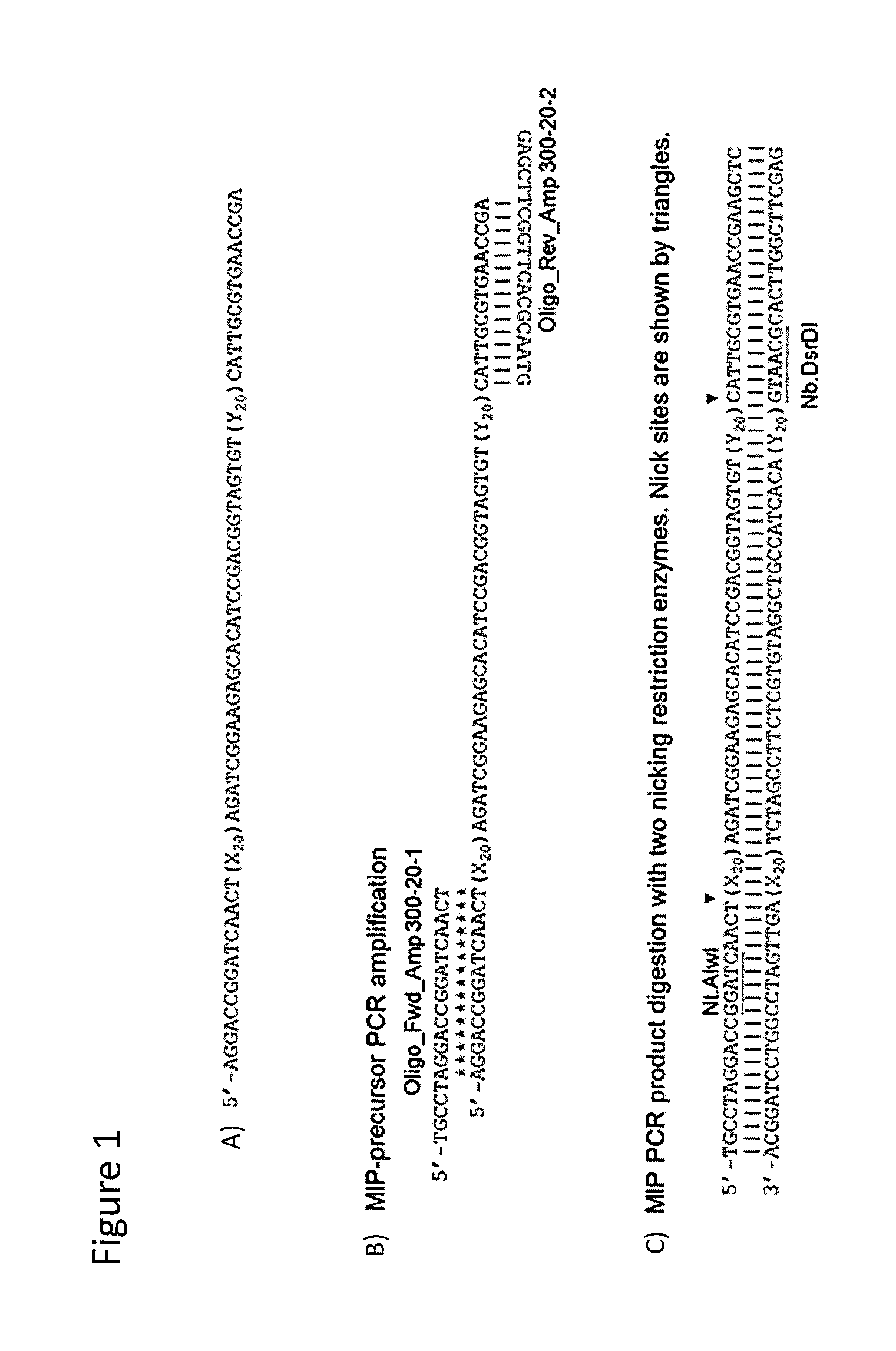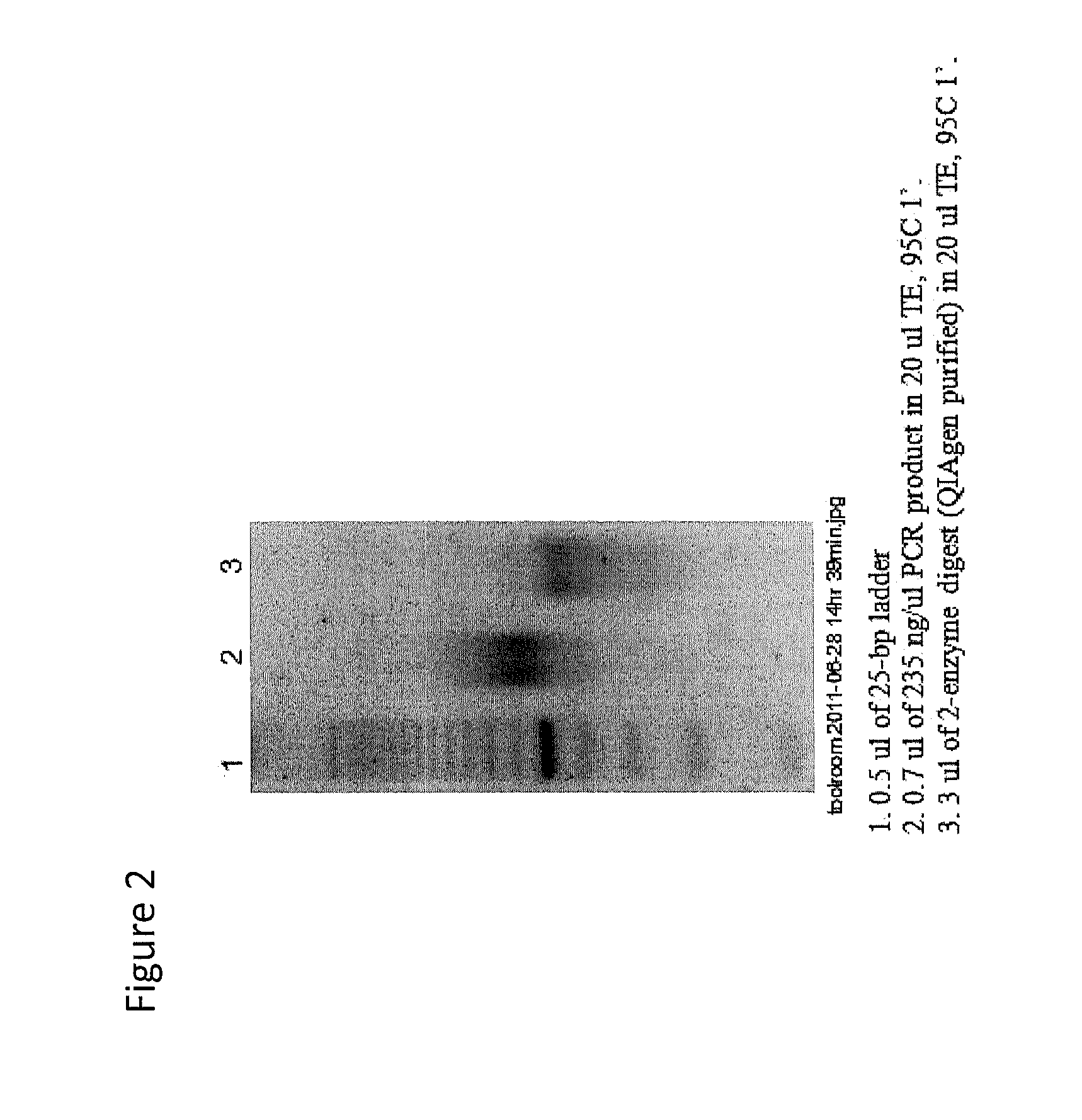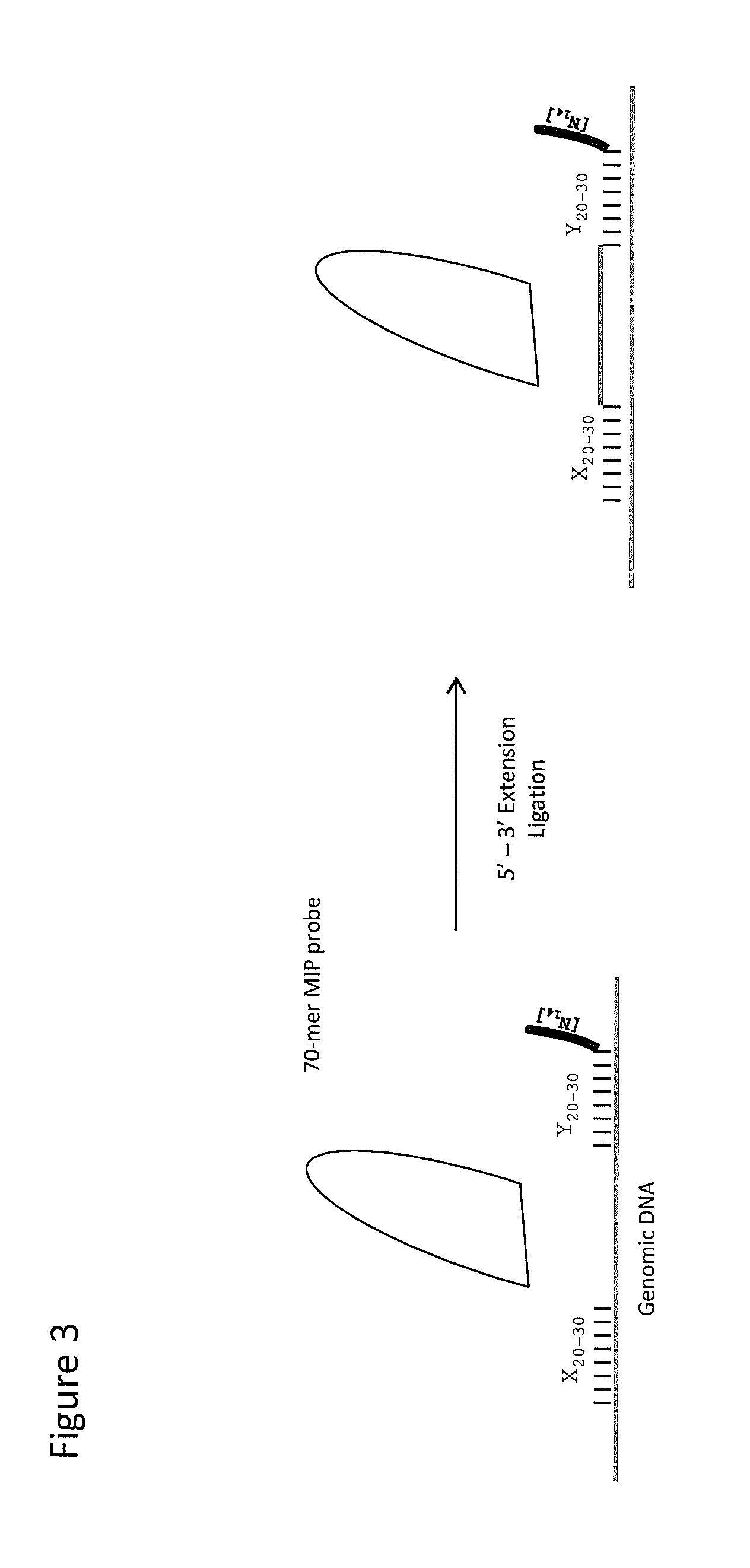Sequence capture method using specialized capture probes (heatseq)
a capture probe and sequence technology, applied in the field of sequence capture methods using specialized capture probes, can solve the problems of time-consuming and resource-intensive hybridization based techniques that utilize double-stranded adapter-ligated sequencing libraries as inputs for target capture, and the traditional molecular inversion probe (mip) based approach to target capture may reduce the workflow time before sequencing but is limited
- Summary
- Abstract
- Description
- Claims
- Application Information
AI Technical Summary
Benefits of technology
Problems solved by technology
Method used
Image
Examples
example 1
MIP Probe Pool Production and Purification
[0058]The protocol for conversion of MIP-precursors to MIPs is detailed in FIG. 1. FIG. 1A shows an example regarding a MIP-precursor molecule. In this example, the MIP precursor was formed by synthesis on a MAS unit such that the precursor was formed on an array surface. The MIP precursor molecule in this example contains two 15mer primer sites on the 5′ and 3′ termini. Adjacent to the terminal primer sites are two 20mer sites that are target specific regions, X20 and Y20, which are complementary to particular sites that border a particular target region in the sample. Between X20 and Y20 is a linker region, in this case a 30mer sequence, which links the two target-specific sequences together.
[0059]The MIP precursor is then subjected to amplification using two primers, in this instance the primers are shown in FIG. 1B. There was both a forward and a reverse primer. The forward primer contains the same sequence as found on the 5′ terminal se...
example 2
Use of the MIP Probe Pool for Capture of Targeted Regions
[0064]The protocol from Example 1 above results in 70-mer MIPs useful for hybridization to genomic DNA. For purposes of these examples, this pool was designated MIP480 mix. It is also readily recognized that such MIPs could be manufactured for use with other forms of nucleic acid targets, including cDNA, RNA, etc. Hybridization and extension steps wherein the MIP probes are contacting genomic DNA are depicted in FIG. 3.
[0065]In the present example, approximately 750 ng of hgDNA or 2.25×105 copies of hgDNA were utilized. Keeping the MIP:genome equivalent ration to approximately 100:1, 1 pg of each probe (500 pg=0.5 ng of MIP480 mix) was used. These MIP calculations assume only 70 nucleotide MIP fragments are present. For the hybridization reaction, the following reagents were used:
ReagentVolume263 ng / μl Genomic DNA (female, Promega)3 μl 790 ng10X Ampligase buffer2.5 μl10 uM Blocking oligo 300-24-1 (300-20-3 in the first design)...
example 3
MIP Protocol for Exon Capture Using 474 MIPs with Variable Length (Between 20-30 nt) for X and Y with Balanced Melting Temperature (Tm)
[0073]In this example, the MIP probes utilized have variable X and Y region lengths, between 20-30 nucleotides. In this embodiment, the Tm is calculated using standard formulas such that X and Y melting temperatures are nearly equivalent.
[0074]In the previous examples, the MIP probes were manufactured with fixed length 20-nt target specific regions, represented as such:
[0075]5′-(X20) AGATCGGAAGAGCACATCCGACGGTAGTGT(Y20), with X and Y representing the two 20 nucleotide long target-specific regions. In the present embodiment, the MIP probes have variable regions that can be represented as such:
[0076]5′-(X20-30) AGATCGGAAGAGCACATCCGACGGTAGTGT(Y20-30), wherein the X region and the Y region do not necessarily have the same length. The Tm distribution of fixed length 20-nt probes and Tm balanced 20 to 30-nt probes is depicted in FIG. 5. In FIG. 5, the X-axi...
PUM
| Property | Measurement | Unit |
|---|---|---|
| concentrations | aaaaa | aaaaa |
| concentration | aaaaa | aaaaa |
| volume | aaaaa | aaaaa |
Abstract
Description
Claims
Application Information
 Login to View More
Login to View More - R&D
- Intellectual Property
- Life Sciences
- Materials
- Tech Scout
- Unparalleled Data Quality
- Higher Quality Content
- 60% Fewer Hallucinations
Browse by: Latest US Patents, China's latest patents, Technical Efficacy Thesaurus, Application Domain, Technology Topic, Popular Technical Reports.
© 2025 PatSnap. All rights reserved.Legal|Privacy policy|Modern Slavery Act Transparency Statement|Sitemap|About US| Contact US: help@patsnap.com



